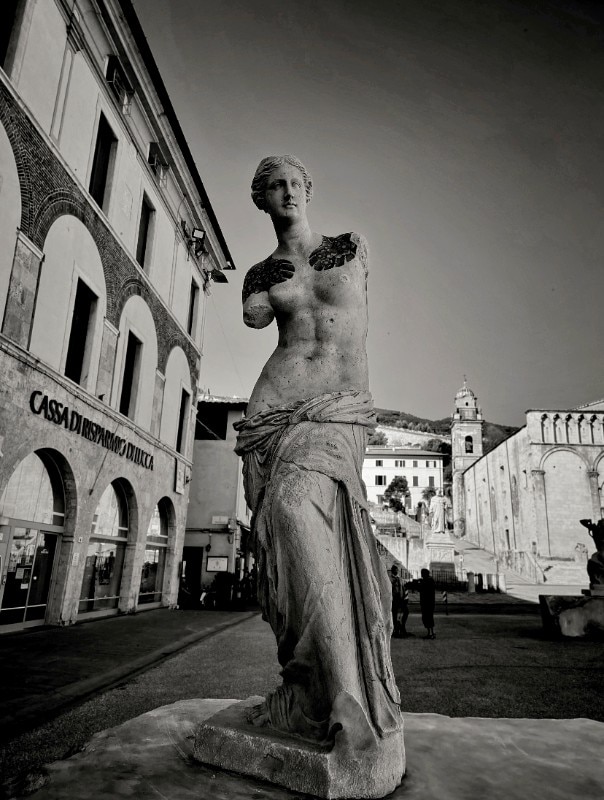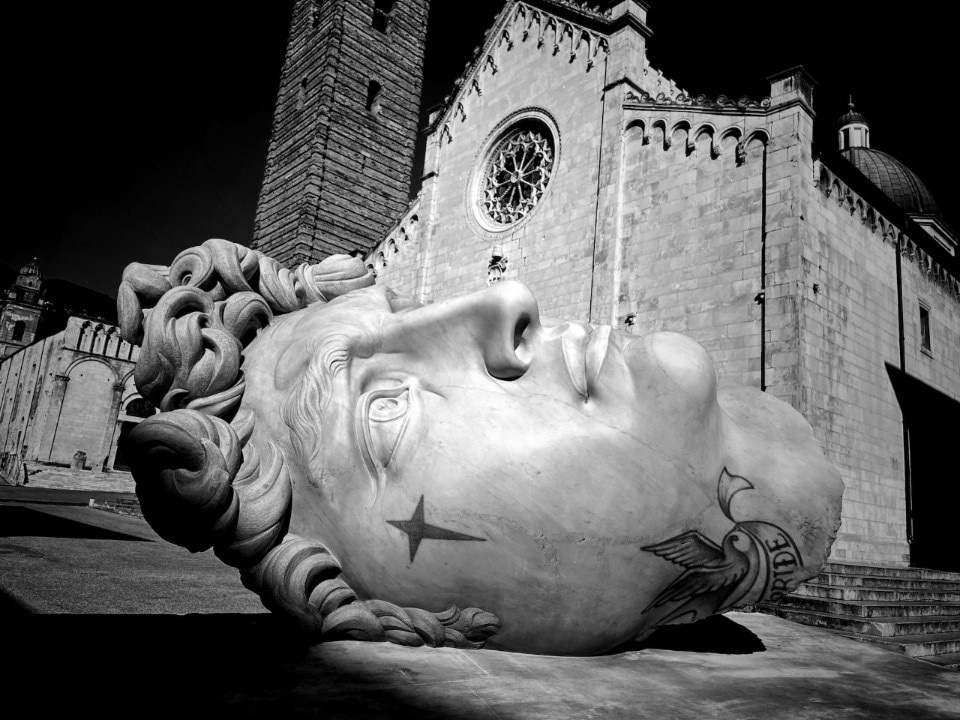Now is the time for art to regain the role it once had: skilled instructor, attentive storyteller, a symbol of wonder and a source of surprise, the coming-together of philosophy, history and literature with an ability to masterfully interpret the complexity of the present. It is time for art to return to an idea of beauty that many have forgotten and even more have never really considered.
Art once presented history, immortalising men and women of power or uncovering the hardships of the more vulnerable. It pre-announced future events and described the past. All things that it no longer does.
Excessively simple and inarticulate, painting and sculpture reflect a form of contemporary culture that has lost and been distanced from a passed that was full of riches.
Artists from all over the world hunger for something new that fails to emerge, and collectors are poised to render it a safe haven in difficult times.
This is the way it has always been, and it is demonstrated by the history of humanity, the economic aspect of art has resolved countless situations, at times disastrous. From the moment of purchase, perhaps four hundred years earlier, to sale, who could have imagined that it would be the salvation of posterity. However, art is not economics, it is not merely a productive system. Art is an escape from reality, it is the search for emotions, an oasis of pleasure, far from that form of society that is the object of discord. Art needs to regain its authority and shake free of that aspect of commodity that it currently represents or tends to represent.

Often art, above all that of the later 20th century, has shied away from need, from the world and from life itself, becoming a pallid intellectual game, failing to examine need and desire, instead leaving these aspects in the hands of a market almost devoid of logic and retreating into a mysterious oasis of intellectualism that now become a neutral and free territory where it can say what it wants, continuing to consume and faithfully serving the market, the sole creator of demand.
Capitalism favours a culture, and therefore a form of art, that is far from the realms of bodily needs, matter and sentiment, because in this way it is free to domineer - guiltlessly -, shrouded in culture that is unable to touch upon the most profound and at the same time the most economically important aspect of humankind.
In a period characterised by a financial, health and ethical crisis, can art once again play its true role? The answer is yes. Our priorities, our lives and our way of purchasing and consuming are due to change, and so why not take advantage and invest in that which, in this period of serious crisis, we have realised has been lacking in recent years?
Artists from past centuries have always had the foresight to adapt to their times or to move in search of a place that suited them better, where their skills could gain them success and therefore allow them to be better appreciated. It is a strategy that has always proved to be successful. It is something that should be happening now.
But the move to be made is much bolder. Why not shift our needs and our choices? It is a fundamentally social matter. Much more than simple collectors, the patrons of the past not only chose their artists for their name, which undoubtedly underlined the importance of their collection, but put their trust in those whose taste and requirements responded best to their requests and their needs.
What were the needs in art at the time? Mimesis: a representation of reality.
Roland Barthes, in Criticism and Truth stated: “Verisimilitude does not necessarily correspond to what was once the case (that is a matter for history, nor to what must be (that is a matter for science) but simply to what the public thinks is possible, which can be quite different from historical reality or scientific possibility. Aristotle based a certain aesthetics of readership on it; if one applied it today to works aimed at a mass audience one might perhaps be able to reconstruct what is the verisimilitude of our time; for such works never contradict what the audience thinks is possible, however historically or scientifically impossible that might be”.
We need culture in order to show the reality in which we live, and which is not only that shown on television or in advertising. We need to invest in schools and in research, and above all to recommence from the fulcrum of society: the individual.
Everything will need to be reconstructed and reformed, it will be a unique and perhaps completely new opportunity, and in fact history has no record of such a situation from which to learn or take cues from, and above all art has never found itself at such a crossroads. Quantity or quality? A precise and clear obsession. Will it still be necessary to purchase or create strange, everyday objects remodelled to become works of art? Will it still be a valid move to present the world with rich monochromatic expanses on canvases so big that one wonders if there are still apartments with the space sufficient to house such colossal works? There is no longer a norm, no longer an objective.
For art, returning to an examination of the world means once again expressing desires. It is by now clear that desire is both the most profound and most concrete, and therefore the most economic, aspect of our lives.
Opening image: photo Valentina Petrucci


